Learn What People Should Eat to be Healthy

Make better choices!
A great starting point if you are looking to work in health or food industries; advance a career, start a business, or simply improve your own health and the health of those around you.
Food is a cornerstone of health and wellbeing; and more important than what many people think.
This course is the starting point to life long learning about food; and a pathway to continually improving your capacity to understand human nutrition.
Who would benefit from this course?
- Life coaches, fitness instructors
- Health industry support staff
- Personal or Professional Carers
- Management or marketing people involved with food production, processing
- Complimentary health practitioners seeking to broaden their knowledge of nutrition
- Health Food Retailers and staff
Comments from ACS Student:
Because I am expanding my knowledge and the things I am learning in this course I can use in everyday life as well, for example, when it comes to making food choices, I think back to what I have learned in this course and think about how certain foods can benefit me and my body. I am getting feedback about how I am progressing, both negative and positive points which help me to improve and also give me confidence in what I am doing and also motivate me. S. Ryan, Australia - Human Nutrition 1
Lesson Structure
There are 9 lessons in this course:
-
Introduction to Nutrition
-
The Digestive System
-
Absorption & Enzymes
-
Energy Value and Foods
-
Carbohydrates and Fats
-
Proteins
-
Vitamins and Minerals
-
Water
-
Nutrient Disorders
Aims
-
Explain the physiology of digestive processes.
-
Recommend appropriate intake of vitamins.
-
Recommend appropriate intake of minerals.
-
Recommend appropriate food intake to meet an individual's energy needs.
-
Recommend appropriate carbohydrate intake.
-
Recommend appropriate fat intake.
-
Recommend appropriate protein intake.
-
Recommend appropriate water intake in different situations.
-
Recognise signs and symptoms of the major nutrient disorders.
What You Will Do
-
Distinguish between nutrition terms including: food, nutrition and diet.
-
Distinguish between characteristics of all major food groups, including;
-
chemistry and foods which are a good source.
-
Explain the significance of each of the major food groups, including:
-
Carbohydrates
-
Proteins
-
Fats
-
Minerals
-
Vitamins.
-
Label on unlabelled illustrations, parts of the digestive system, including:
-
Oesophagus
-
Liver
-
Stomach
-
Gall bladder
-
Pancreas
-
Duodenum
-
Ascending colon
-
Caecum
-
Appendix
-
Transverse colon
-
Descending colon
-
Ileum
-
Sigmoid colon
-
Rectum.
-
Explain the function of different parts of the digestive system, including:
-
*Salivary Glands *Liver *Stomach *Gall bladder *Pancreas *Duodenum *Colon *Ileum *Rectum.
-
Distinguish between digestion and absorption of food.
-
Explain the different layers of the digestive tract, including:
-
*Mucosa *Submucosa *Muscularis *Serosa.
-
Explain different physiological processes involved in absorption.
-
Explain how different hormones control the digestive process, including:
-
*Gastrin *Gastric Inhibitory Peptide *Secretin *Cholecystokinin.
-
Explain the action of different digestive enzymes.
-
Convert calories to joules.
-
Explain the meaning of basal metabolic rate (BMR).
-
Describe how the intake of different types of food may affect metabolic rate.
-
Explain how different factors other than food intake can affect digestion, including stress and disease.
-
Compare energy values of different foods, on a given food chart.
-
Explain possible implications of mismatching food intake to individual's energy needs, through over or under intake of energy requirements.
-
List foods which are a common sources of carbohydrate.
-
List common foods in your own diet which are poor sources of carbohydrate.
-
Distinguish between monosaccharides and disaccharides in your own normal diet.
-
Explain relative values of alternative sources of carbohydrates.
-
Explain factors which affect the bodies demand for carbohydrate.
-
Develop guidelines to determining appropriate carbohydrate intake, in accordance with an individuals specific requirements.
-
List foods which are a common source of fats.
-
Distinguish between saturated and unsaturated fats in the diet of a specific person.
-
Explain the relative value of alternative sources of fats.
-
Explain factors which affect the bodies demand for fat.
-
Explain the role of fat in the body, including an explanation of different physiological processes involving fat.
-
Develop a set of guidelines to determining appropriate fat intake, in accordance with an individuals specific requirements.
-
List foods which are a good source of protein.
-
Explain the role of protein in the body, including examples of different physiological processes involving protein.
-
Explain relative values of different sources of protein.
-
Explain factors which affect the bodies demand for protein.
-
Develop guidelines to determining appropriate fat intake, in accordance with an individuals specific requirements.
-
List different sources for each of several different minerals considered essential to human health.
-
Explain the role of different minerals in the body.
-
Consider the relative values of different sources of minerals in your own diet, to determine minerals which may be supplied in inappropriate quantities.
-
Describe symptoms of different nutrient disorders including deficiencies and toxicities.
-
Explain the use of different mineral supplements in a specified human diet.
-
Distinguish between sources of different types of vitamins which are important to human health, including:
-
*Retinol *Vitamin D *Vitamin E *Vitamin K *Ascorbic acid *Thiamine *Riboflavin
-
*Nicotinamide *Pyridoxine *Pantothenic acid *Biotin *Cyanocobalamin *Folacin.
-
Explain the role of different vitamins in the body.
-
Explain the relative values of different sources of each of five vitamins.
-
Explain proliferation of vitamin supplement usage in modern society.
-
Describe symptoms of five different vitamin disorders including deficiencies and toxicities.
-
Explain the role of water in the body, for different physiological processes.
-
List factors which affect the bodies requirement for water.
-
Compare different methods of purifying water, including different commercially available water purifiers.
-
Explain the physiology of dehydration, at different levels.
-
Discuss the affect of different water impurities on human health.
-
Distinguish between the signs and symptoms of forty common problems associated with nutritional disorders, including: *deficiencies *sensitivities *diseases.
-
Describe different techniques used by health practitioners for determining food/nutrition disorders.
-
Explain the importance of obtaining a recommendation from a medical practitioner, when a nutritional disorder is suspected.
-
Explain the significance of "second opinion", when diagnosing nutrient disorders.
WHAT DOES A PERSON NEED TO EAT?

A person’s lifestyle has a big impact on their diet. There are many factors that make up our lifestyle, and each of these factors contribute to dietary requirements and choices. There are so many aspects of a person’s lifestyle that can have an affect on diet that a whole book could be written on this topic. For the purpose of this lesson, lifestyle factors that are going to be discussed are how different daily activities result in different nutritional requirements; the impact of specific dietary choices; the affect of geographical location on diets; and cultural differences in diets.
Daily Activities
The activities a person engages in over a day will determine their energy requirements for that day. People who engage in more and higher intensity activities will use more energy per day, and will therefore need to consume more calories to meet their daily energy requirements. The difference in daily activities between people is vast. Where one person may spend their day exercising and engaging in physical work, another person may drive their car to work and spend all day behind a desk. To get the whole picture of a person’s requirements, all activities over the whole day will need to be considered. This includes voluntary exercise, occupational activities, general housework, getting to and from work, and individual differences. Obviously, there are innumerable different ways a person can spend their day, so in this section generalised examples are given. For the purpose of keeping things simple, the focus will be on adults in the western world.
Voluntary exercise
When considering daily energy usage, usually the first thing people look at is the individual’s voluntary exercise habits. In this context, voluntary exercise is the activity that people choose to do for fitness or enjoyment purposes. This aspect of daily energy expenditure is a personal choice, and therefore can differ tremendously form person to person. Voluntary exercise can include running, walking, team sports, going to the gym, yoga classes and many more. The amount and intensity of exercise people choose to do in their spare time can have a big influence on their overall daily energy expenditure. The influence works in two ways. One, that the exercise activity itself requires energy usage. The second is a result of an increase in muscle tissue. Muscle tissue is more metabolically active than fat tissue, therefore someone that exercises and builds muscles will have a higher rate of metabolism (and therefore use more energy) even when they are resting than someone with a lower proportion of muscle tissue.
 Occupational activities
Occupational activities
For the average adult in the western world the majority of their waking day is spent at work. From an energy usage perspective, this can create vast differences between people because of the variation in activity levels and consequently energy usage associated with different occupations. Consider a manual labourer and an office worker. A manual labourer will often spend 8 hours a day engaging in low-high intensity physical labour, whereas an office worker may spend the majority of their day sedentary at a desk. Because the manual labourer is using much more energy to do their daily activities, they will have much higher dietary energy needs than the office worker. These two examples are at opposite ends of the spectrum and in between is a wide variety of occupations that require different levels of activity, and hence different dietary energy requirements.
In general, the activity level of different occupations can be divided into sedentary, light work, medium work, and heavy work.
-
Sedentary: Little to no activity. For example an office worker, telemarketer, administrator.
-
Light work: Frequent light activity such as walking, standing. For example a teacher, retail assistant, dentist, bar tender.
-
Medium work: Frequent medium level activity such as light lifting, or reasonably constant light-medium activity such as fast walking. For example nurse, massage therapist, physiotherapist, courier driver.
-
Heavy work: High level activity such as heavy manual labour tasks. For example brick layer, farmer, landscaper.
Getting to and from work
The manner in which people travel to and from work can also affect their total daily energy expenditure. Many people drive to work from door to door, requiring minimal energy usage. Other people’s route to work may include a combination of walking and public transport, using slightly more energy. Other people may walk or bike to work, requiring higher levels of energy usage. People who are aiming to get fit or lose weight are often encouraged to include exercise on their way to and from work, even if the exercise is as minimal as taking the stairs instead of the elevator, or stopping one bus stop early and walking the rest of the way.
General housework
Completing daily chores is another area that some people exert energy in during a day. Housework chores can use up a surprising amount of energy, and use similar or more energy than a low-intensity voluntary exercise activity.
Individual differences
Individual differences can also affect overall energy usage. In this context, individual differences refers to personal habits that occur consciously or unconsciously throughout the day that differs from person to person. For example, some people constantly fidget or move, even when sitting at a desk, increasing their overall energy usage. One office worker may frequently get up to do photocopying, stretch, drink water and may use the stairs rather than the elevator, whereas another worker may sit at their desk virtually all day and catch the elevator.
It is also worth noting that the overall energy usage depends greatly on how much effort is put into a task. If you think about somebody vacuuming their house, one person may do it at a very fast pace in an energetic manner and their overall energy usage will be higher per hour than another person vacuuming their house at a slower pace. To use another example, the amount of energy used by a brick layer who is a hard worker who works consistently throughout the day will be different to a brick layer who is not such a hard worker who works more slowly, carries less bricks at a time and has frequent breaks.
Requirement for different nutrients
In general, people have similar overall nutrient requirements. However, different daily activities may result in some differences in the types of nutrients that are required to maintain a balance. For example, a manual labourer is likely to require more carbohydrates for energy whilst working and protein for muscle recovery than an office worker. The manual labourer is also likely to sweat a lot, so they will need more water and may need electrolyte replacements. This topic will not be covered in great depth here, due to it’s complex nature. To find out more about specific daily nutritional requirements, consider seeking advice from a general practitioner or a healthcare professional. You can also refer to government websites that provide dietary guidelines for relevant countries.

NUTRITION CAREERS AND SPECIALISATIONS
Consultant / Private Practice
- Client counseling for weight management, diet-related disorders, optimise wellbeing and performance.
- Write cookbooks, website content, educational programs, newspaper or magazine articles
- Food photography, critique, reviews
- Consult in corporate organisations, health or fitness clubs, spas, resorts as a personal trainer-nutritionist
Food and Nutrition Management
- Workplace wellness--teach nutrition, exercise, fitness and other health promotion to employees
- Aged care, disability communities, long-term care, businesses, schools
- Work with chefs or at spas
- Consult regarding food and menu choices
Professional Development
- Teachers
- Nannies
- Carers - child, aged, disability
- Allied Health Industry professionals - medical
- Trade Associations - dairy, pork, poultry, fruit & vegetable growers
- Nurses
- Community Health workers
- Catering, restaurant staff
- Rehabilitation
Media
- Blog, website & social media content
- Contributions to Radio, TV, newspapers and magazines as major sources of nutrition education
Related Health Professions
- Nursing
- Massage Therapist
- Personal Trainer
- Life Coach
- Homeopath
- Dentist or dental nurse
- Naturopath
Business and Industry
-Jobs in management, sales, marketing, public relations, research and development, production and quality control in associated industries including:
- Food processing and production
- Health service and devices
- Wholesale Nutritional supplements
- Health Food Retail
- Health insurance
- Pharmacy
- Food Service Catering
- Trade Associations (eg.Dairy Council, Wheat, Pork, Lamb, Beef producers)
- NGO's and Aid organisationsNutrition careers and specialisations

To find out if this course is right for you, contact a course advisor here.
